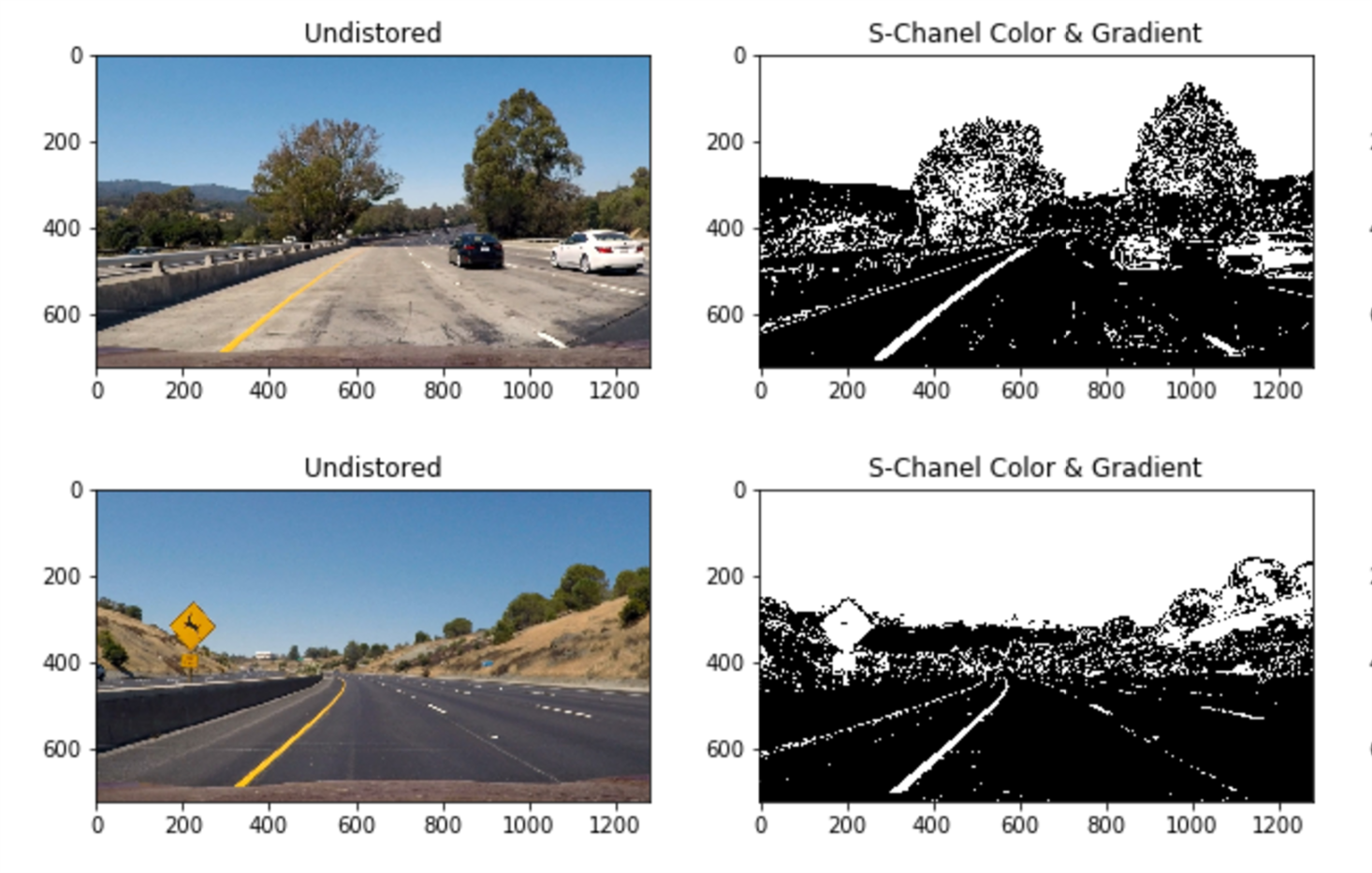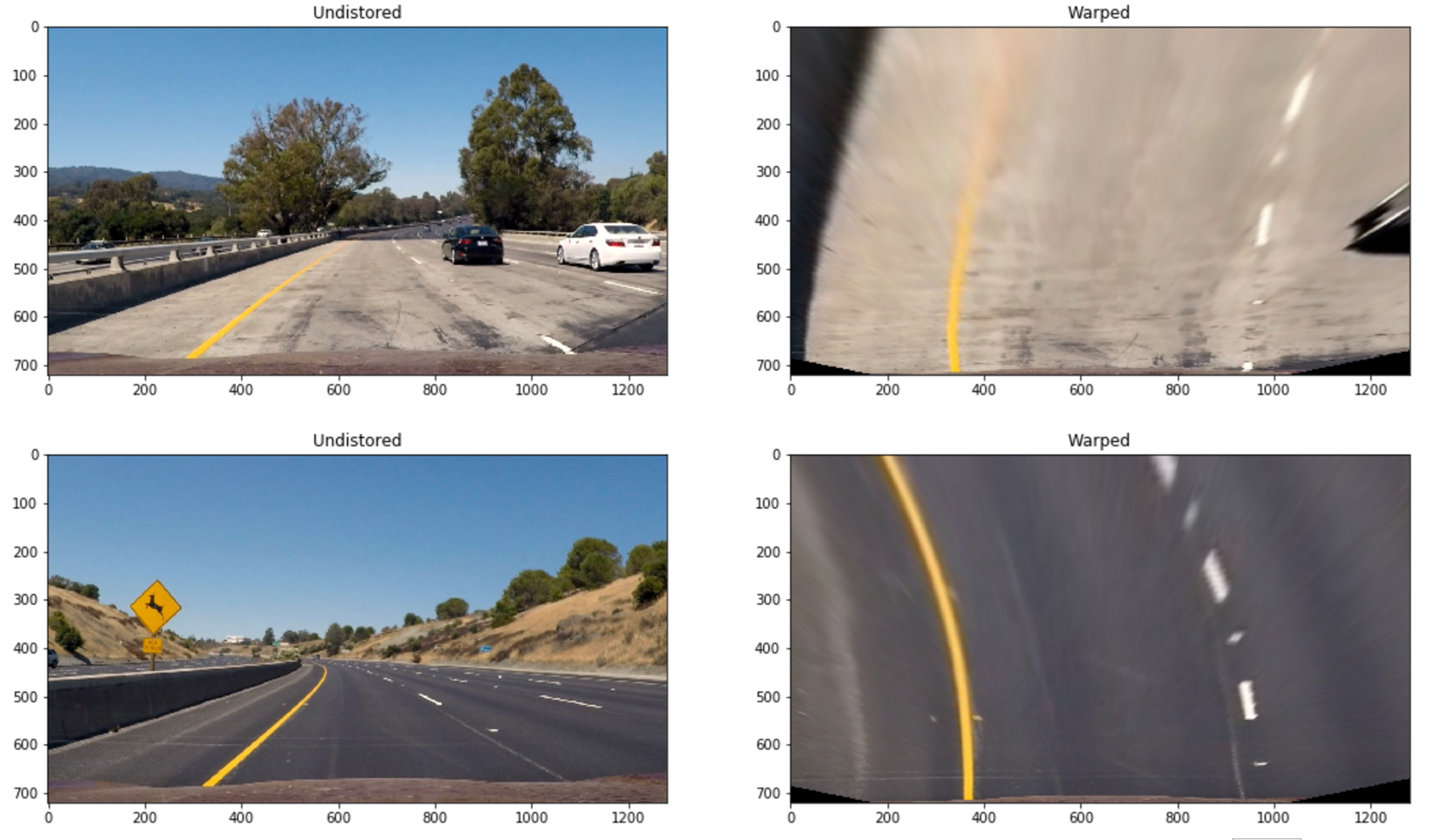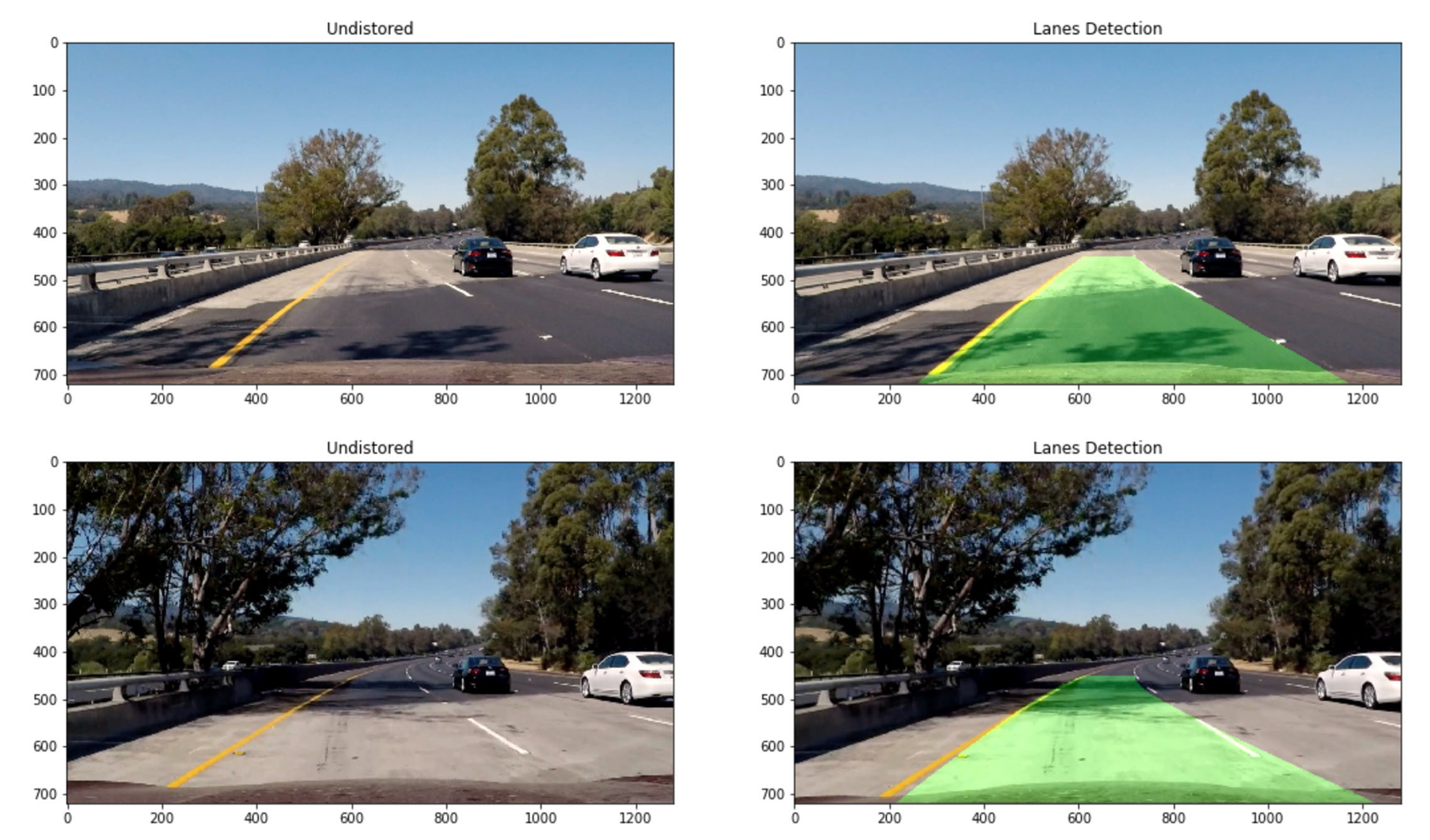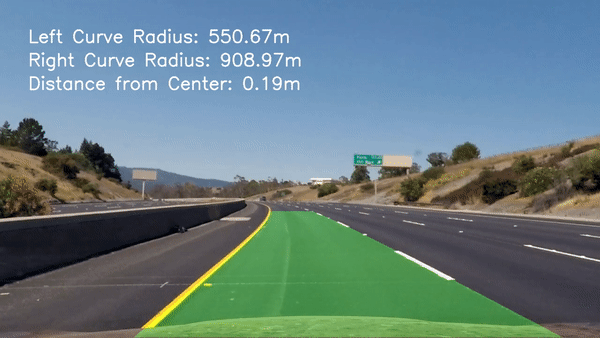Advanced Lane Finding Project
The goals / steps of this project are the following:
- Compute the camera calibration matrix and distortion coefficients given a set of chessboard images.
- Apply a distortion correction to raw images.
- Use color transforms, gradients, etc., to create a thresholded binary image.
- Apply a perspective transform to rectify binary image ("birds-eye view").
- Detect lane pixels and fit to find the lane boundary.
- Determine the curvature of the lane and vehicle position with respect to center.
- Warp the detected lane boundaries back onto the original image.
- Output visual display of the lane boundaries and numerical estimation of lane curvature and vehicle position.
This project requires Python 3.5 with the following libraries/dependencies installed:
Advanced-Lane-Finding.ipynb- The main notebook of the project.helper.py- The script contained required helper functions.lineinfo.py- The script define Python class to track line information.
1. Briefly state how you computed the camera matrix and distortion coefficients. Provide an example of a distortion corrected calibration image.
The code for this step is contained in the cell 2 of the IPython notebook located in "./Advanced-Lane-Finding.ipynb".
I start by preparing "object points", which will be the (x, y, z) coordinates of the chessboard corners in the world. Here I am assuming the chessboard is fixed on the (x, y) plane at z=0, such that the object points are the same for each calibration image. Thus, objp is just a replicated array of coordinates, and objpoints will be appended with a copy of it every time I successfully detect all chessboard corners in a test image. imgpoints will be appended with the (x, y) pixel position of each of the corners in the image plane with each successful chessboard detection.
I then used the output objpoints and imgpoints to compute the camera calibration and distortion coefficients using the cv2.calibrateCamera() function. I applied this distortion correction to the test image using the cv2.undistort() function and obtained this result:
I applied a distortion correction using the camera calibration matrix and distortion coefficients. This logic is wrapped in helper function undistort_image() locate in "helper.py" file.
I applied this function test images and received one of the following result:

2. Describe how (and identify where in your code) you used color transforms, gradients or other methods to create a thresholded binary image. Provide an example of a binary image result.
I used a combination of color and gradient thresholds to generate a binary image (thresholding steps are warpped in function def apply_schanel_and_gradient() in helper.py). Here's an example of my output for this step.
3. Describe how (and identify where in your code) you performed a perspective transform and provide an example of a transformed image.
The code for my perspective transform includes a function called warp_image(), which appears in lines 22 through 40 in the file helper.py (output_images/examples/example.py) (or, for example, in the 3rd code cell of the IPython notebook). The warp_image() function takes an input image (img). I chose to hardcode the source and destination points in the following manner:
src_points = np.float32([[700,450],[1150,img_height],[190,img_height],[590,450]])
dst_points = np.float32([[990,0],[940,img_height ], [300,img_height],[300,0]])This resulted in the following source and destination points:
| Source | Destination |
|---|---|
| 700, 450 | 990, 0 |
| 1150, 720 | 940, 720 |
| 190, 720 | 300, 720 |
| 590, 450 | 300, 0 |
I verified that my perspective transform was working as expected by drawing the src and dst points onto a test image and its warped counterpart to verify that the lines appear parallel in the warped image.
4. Describe how (and identify where in your code) you identified lane-line pixels and fit their positions with a polynomial?
I implemented the sliding window search technique to scan line pixels and fit my lane lines with a 2nd order polynomial.
Here is the result:
5. Describe how (and identify where in your code) you calculated the radius of curvature of the lane and the position of the vehicle with respect to center.
Curvature calclation is wrapped in helper function calc_curvature_and_center() between lines 255 through 292 in my code in helper.py.
6. Provide an example image of your result plotted back down onto the road such that the lane area is identified clearly.
I implemented this step in lines 295 through 325 in my code in helper.py in the function paint_lanes_interest_region(). Here is an example of my result on a test image:
1. Provide a link to your final video output. Your pipeline should perform reasonably well on the entire project video (wobbly lines are ok but no catastrophic failures that would cause the car to drive off the road!).
Here's a link to my video result
1. Briefly discuss any problems / issues you faced in your implementation of this project. Where will your pipeline likely fail? What could you do to make it more robust?
The current lane detection algorithm work well for the project video "project_video.mp4", in which the lanes are clealy visible and mark, but the algorithm fail when it run against videos with heavy shade/shadow on the roads and sharp curves.
The algorithm can be improved by expiermenting with other color spaces such as LAB and LUV to reduce shadows and return high lanes contrast. Base on my researches, I learn that B channel of LAB might work well in picking up yellow lanes, and L channel from LUV might works well to pick up white lanes, and both without the shadow noise that comes with S channel of HSV.





